| Talon SS (top) with Leupold 3-9X scope, Tri-Rail scope base, and optional bipod. Condor (bottom) with AirForce 4-16x scope and LS-1 Laser. Extra Talon air tank (center). The air valve in the Condor air reservoir (left) is considerably bigger than the Talon valve (right) to provide greater power and higher muzzle velocity. Did you know? Lewis and Clark carried a pre-charged pneumatic air rifle with them during their exploration of the Northwest Territory. Their air rifle was designed in 1790 by Girandoni, an Italian, and thought to have been made by Isiah Lukens in Philadelphia. It was a whopping .46 caliber with a tubular magazine holding twenty-one lead balls plus one in the chamber. All twenty-two could be fired in less than half a minute! Remember, this was in the days of muzzle loaders. Although the air tank worked on only 800 psi, it had enough power to punch through a one inch board at 100 yards. Each new group of Indians they encountered was given a demonstration of this powerful repeating rifle, and it deserves much of the credit for guaranteeing the safety of their history-making expedition. |
AirForce Guns
www.airforceairguns.com
Pellet guns let you to bring your shooting home and AirForce, a small manufacturing company in Fort Worth, Texas, makes some great guns to do it with. We tested their two most popular models, the Talon SS, (MSRP $551) and the Condor, (MSRP $649), out at the ranch on a typical north Texas summer day.
There are basically three types of air guns: spring guns which must be cocked prior to each shot, CO2 guns which use small canisters of carbon dioxide as propellant, and pre-charged pneumatic (PCP) guns which use compressed air. The advantages of a PCP gun over the other two types are that they can be more powerful, they shoot more consistently, there is virtually no recoil, and follow-up shots are faster and easier since the gun doesn’t have to be cocked between shots.
Spring guns are consistent shot-to-shot, but are limited in power and it takes considerable effort to cock them. The action, of course, has to be cocked on all airguns. What I’m referring to here is cocking the spring that compresses the air to fire the pellet. They also have unusual recoil.
CO2 guns share some of the advantages of the PCP guns. They are fairly consistent shot-to-shot if not fired too quickly, have virtually zero recoil, and don’t need to be cocked (for propulsive force). They have the additional advantage of being charged by an easily replaced CO2 cartridge. The main disadvantages derive from the way CO2 works as a propellant. Instead of using pressurized air, the CO2 cartridge contains a mixture of liquid carbon dioxide and CO2 vapor under pressure.
As each shot is fired, vapor is released from the cartridge and some of the liquid in the cartridge vaporizes to compensate for the drop in pressure. Because the vapor pressure of CO2 is constant at a given temperature, the pressure released is constant as long as there is any liquid CO2 remaining. However, the effect of temperature is significant.
First, the vapor pressure of CO2 is much less than the compressed air of the AirForce PCP guns resulting in significantly less power, muzzle velocity and range. For example, at 72 degrees F, the vapor pressure of CO2 is roughly 850 psi versus 3,000 psi for the AirForce guns.
Second, the vapor pressure of CO2 changes dramatically with changes in temperature. At 0 degrees F, CO2 has a vapor pressure of a little more than 300 psi. At 80 degrees F, the vapor pressure of CO2 is just under 1,000 psi. So if you sight your CO2 gun on a warm day and then go out to shoot on a cold day, or vice versa, your zero will be way off.
Third, each shot of a CO2 gun results in cooling of the CO2 cartridge and valve. Unless you wait for the temperature to stabilize, your shots won’t be consistent, depending on range. The longer the range, the more effect a change in pressure has on shot placement, so CO2 guns are better suited to short range shooting. By-the-way, the AirForce guns can be easily converted to CO2 and back, and some owners use CO2 for indoor target shooting where distances are short and the temperature is constant.
Airguns, of course, come in a wide range of price and performance levels from low cost, low power BB guns for kids to multi thousand dollar competition guns. The AirForce guns rank just below the top-of-the-line competition guns in performance, but in the middle of the field in price, making them an exceptional value. They are priced at about half of what you’d pay for a comparable gun made in Europe.
Talon SS
The Talon SS has a bottle-shaped compressed air tank which doubles as the stock. Its maximum air pressure is 3,000 psi. There’s a built-in blow-out valve as a safety precaution in the event of excess pressure, so if you’re thinking, if it shoots this good at 3,000 psi, what will it do at 4,000…don’t bother.
The air tank is filled from a high pressure compressor, scuba dive tank, or with a hand pump. Scuba tanks are the most widely used means and are relatively inexpensive to get refilled. We rented a tank for five days for $13. The dive shop where we rented it had scuba tanks for sale for $150 and charged $7 to refill them, so it would take 25 fill-ups to amortize the cost of buying a tank, not counting the added convenience of having a tank at home whenever you wanted to shoot. We fired approximately 200 shots and barely put a dent in the air in the scuba tank we were using. The pressure only dropped from 3,000 psi to 2,700 psi, not enough to make a significant difference in the way the guns shot.
The air tanks were very easy to fill from the scuba tank. Just screw them on, close the bleed valve on the fitting that connects the gun tank to the scuba tank, and crack the scuba tank valve. It takes a few seconds. To remove the gun tank, close the scuba tank valve, open the bleed valve and unscrew the tank, and you’re ready to shoot.
You can also use multiple AirForce air tank/stocks which are easily interchanged by simply unscrewing one tank from the gun and screwing on another. In fact, the air tanks from the AirForce Talon and Talon SS are interchangeable with the Condor tank, although at a small loss of power when putting the Talon tank on the Condor. The Condor tank has a larger air valve than the other two rifles to produce additional velocity.
Our test gun came with an optional AirForce 4-16×50 scope, mounting rails and scope rings. It was a simple matter to mount the scope and sighting-in was easy using the external adjusting knobs for windage and elevation. The gun comes with a DVD which explains its operation and the quickest way to site it in. You’ll find that the time taken to watch the DVD is time well-spent.
The Talon SS has a 12” barrel made by Lothar Walther, world renowned for their barrel quality and accuracy. In fact, the barrel is the most expensive component of the gun, and it shows in the performance.
The barrel is enclosed in a shroud which extends 4” beyond the muzzle. This added length, combined with an end cap, although not technically a silencer, does contribute to making this a very quiet gun for its power level. It’s not silent, but makes less noise than a pneumatic nail gun. It is easily quiet enough for shooting in your backyard, even in an urban environment.
To prepare the gun for shooting, you screw an air tank/stock onto the receiver after opening the breech by pushing the knob on the breech cover forward, cocking the action. You then seat a pellet in the chamber at the back end of the barrel, and slide the cover to the rear, locking it into position with a short twist to the right or left depending on if you are right handed or left handed. Yes, the gun is ambidextrous for all you lefties.
It’s important that you fully seat the pellet so that the bottom (or back) edge of the pellet skirt is flush with the end of the barrel. This ensures that the pellets shoot consistently thus giving you the best accuracy.
When you push the breech cover forward to load a pellet, it not only cocks the action, but also automatically applies the safety, a small lever covered with a red plastic sleeve in the front of the trigger guard. Remember to push it forward before trying to shoot. I guarantee that you will forget to do this, more than once, but after a while it becomes second nature.
Initially, the trigger on our gun required more pressure than is optimum for the most accurate shooting. We didn’t have a gauge to measure exactly how many pounds it took, but all three of our shooters agreed it was too much. Fortunately, the trigger shoe is secured to a slot in the trigger arm as shown in the accompanying photo. It’s not necessary to remove the shoe completely; just loosen the screw and slide it down the slot to where it’s most to your liking. We positioned it all the way to the bottom edge of the slot which greatly improved the trigger feel. With the shoe in that position, you could take up the travel until just before the release point, and then complete the shot when your cross hairs were lined up.
When you pull the trigger, it releases a hammer which opens the air valve firing the pellet out of the barrel. You can feel it when the hammer opens the valve but there’s virtually no recoil. Spring guns on the other hand have an odd recoil with a forward component that will destroy the reticles on even the best high power rifle scopes. You have to use scopes specifically made for airguns. That’s not the case with a PCP airgun.
So how accurate is it? Our shooting conditions were 100 degrees, low humidity, with light and variable winds, some gusts to 10 mph. The wind was predominantly a quartering head wind from the left. After sighting in the scope, we shot at 35 yards using two different pellet types which were recommended by AirForce. We used the Crossman Premier 625 Domed 14.3gr. .22 caliber (5.5mm) pellets primarily in the Talon SS. We used the Kodiak Tapered Dome 21.14gr. .22 caliber (5.5mm) pellets primarily in the Condor.
A word about pellets. There are lots of cheap pellets available, but to get the best performance from these guns, use quality pellets. The cheap pellets aren’t as consistent in size and weight. We were even told of one pellet which was undersized enough to tumble when going down the barrel. You can imagine what that does to accuracy. You might have had a cheap pellet gun when you were a kid that you fired small stones through (I’m sure I’m not the only one). You don’t want to do that with these fine pieces of machinery.
As you can see from the targets, you can expect to be able to shoot one inch groups pretty consistently at 35 yards. With a little practice and no wind, you could probably get that down to ½ to ¾” groups. There were no snipers shooting here, just three guys having fun.
When shooting a cartridge gun, you have variables like bullet weight, charge, and manufacturer, but once you decide on a particular cartridge, it should be very consistent. Because PCP airguns use compressed air for the propellant, the pressure in the air tank decreases as you shoot. That’s a variable that doesn’t go away. Fortunately, the AirForce guns minimize that variable. Here’s how it works.
When you pull the trigger, it releases a hammer which is propelled by a coil spring into the valve on the tank. That pushes the valve open releasing a charge of air to accelerate the pellet down the barrel. The pressure of the air in the tank then overcomes the blow from the hammer and the force of the spring to once again seal the valve. As the pressure in the tank goes down, it doesn’t close the valve quite as quickly, thus allowing slightly more air to push the pellet. In short, you get good consistency shot-to-shot through this self-regulating mechanism.
There’s one more feature of these guns which gives you some limited control over the length of time the valve stays open and hence the speed at which you’re driving the pellet down the barrel. On the left side of the gun, just forward of the handle, there’s a power wheel. According to AirForce, this lets you adjust the muzzle velocity between 400 to 1,000 feet per second on the Talon, depending on the pellet weight. What it means to you as a shooter is that you have some control over the sound level, performance, and number of shots you get from a tank of air.
To shoot in your backyard, or in your house with a bullet trap designed for a .22 caliber gun (a cardboard box and piece of carpet isn’t going to cut it with these guns), you’ll want to dial it down to the lowest and quietest setting. There will be more than enough power for the short distance you’ll be shooting. For longer range shooting or hunting, you’d obviously want to use higher power settings.
After firing a round of shots at the highest setting, we dialed it down to number 9 which is about a third of the way down. We didn’t notice a change in impact at 35 yards and the groups were just as tight if not tighter.
We were able to consistently put four rounds out of a five shot group into an inch or less. There always seemed to be one shot that got away from us a little and resulted in increasing the group size to an inch and a quarter or an inch and a half. I attribute that to the wind. It couldn’t have been the wobbly shooters…
By-the-way, we were able to fire 20 – 30 rounds from a full tank of air before seeing a significant drop in the point of impact at 35 yards. By that I mean an inch or more. At that point we just topped it off from the scuba tank and resumed firing. You could also just keep shooting and adjust your point of aim or, if you start at a low power setting, dial in more power to compensate.
We shot at the lowest power setting at 35 yards with good groups. We did have to raise our point of aim some, but at that setting the gun was quiet and you could easily hear the pellet hit the target. We finished off by shooting at a row of ¾” paint balls at 50 feet. Yeah, I know ladies…boys just have to make a mess. That’s half the fun! In fact, that’s why we were at the ranch, they wouldn’t let us do it at the range.
Condor
The Condor was designed for small game hunting and pest control. The Talon is quite capable of those applications but the Condor is more powerful and gives you a longer effective range. In fact, the Condor is the most powerful .22 caliber airgun in the world. Like its siblings, the Talon and Talon SS, it’s also available in .17, .20 and .25 calibers.
The barrel, as with the other AirForce guns, is made by Lothar Walther. The Condor uses a 24” barrel versus 18” for the Talon and 12” for the Talon SS models. The greater length means more time for the compressed air to accelerate the pellet producing higher muzzle velocities. The Condor is capable of velocities as high as 1,300 feet per second with lighter pellets although you won’t want to fire at that high a velocity because accuracy falls off at more than 1,000 fps.
There are two ways to control muzzle velocity: 1.) as pellet weight increases, muzzle velocity drops and 2.) using the power wheel located on the left side of the frame just above the forearm. As in the Talons, by turning this wheel, you vary the pressure on the hammer spring which controls the length of time the air valve is open with each shot, thereby controlling the muzzle velocity. For target practice, you can dial down the velocity to give you more shots from each tank of air. In the field dial it up as high as you want or until your groups start to open up.
If you expect the Condor to be quiet, that’s not the case. In fact, the Condor, at its lowest power setting, is louder than the Talon SS at its highest power setting. The Condor has a report about like a .22 short cartridge and is a little louder at maximum power than at lower settings. So if you want to shoot in your backyard, the Talon barrel and shroud would be better. Fortunately, the barrels are easily interchangeable between the three guns. Just remember that the Condor is the only one with the bigger air valve. By getting a Condor with two or three barrels, you get the best of both worlds, power and quiet, your choice.
We shot the Condor at the ranch at both 35 yards and 50 yards. We didn’t have a chronograph to tell when our muzzle velocity was likely to give us the best accuracy, so just turned the power wheel down to about the number 9 again. At 35 yards, 1” groups were easy. Accuracy was on a par with the Talon SS.
When we went to a 50 yard range, the groups opened up a little, but not much. You could make head shots on squirrels pretty consistently at 50 yards and the pellets were still punching through the 3/8” plywood backer we were stapling our targets to. More than enough power for small game.
50 yards is pretty much the practical limit for small game hunting with most airguns, but the Condor is capable of taking shots at 70 yards according to AirForce. I took the guns to a 100 yard range to test this out and fired both guns at 50 yards, and the Condor at 100 yards. At 50 yards, once the scopes were sighted in, it was possible to shoot sub-one inch groups with either gun.
Moving out to 100 yards, it took a number of shots to get on target. About 50 shots had been fired prior to this and, due to the large valve in the Condor air tank, that’s enough to reduce your air supply and power. At 50 yards, it doesn’t make that much difference. At 100 yards, you need all the power it can deliver. Unfortunately, I didn’t have a scuba tank at the range so couldn’t top off the gun.
I had to dial down the cross hairs on the scope the equivalent of 15” and ran into the adjustment limit. But even with the reduced power, the Condor was able to group shots into 1” at 100 yards. That’s one minute of angle accuracy. Not bad for an airgun. Hell, not bad for any gun. Topping off the air tank would have certainly brought the point of impact up to the bull’s eye. And at 70 yards, what AirForce gives as the small game range, it would be a piece of cake.
As I said earlier, we used the heavier 21.14gr. Kodiak pellets primarily in the Condor. We did shoot some of the lighter 14.3gr. Crossman Premiers at 35 yards and didn’t see much difference in accuracy. Shooting the heavier Kodiaks out of the Talon SS resulted in the group dropping about 2” lower than with the Crossman’s, but it stayed just as tight as the lighter pellets.
When shooting at the ranch, we refilled the Condor air tank from the scuba tank after every 6 – 10 shots to insure that we were testing the different pellet weights and power wheel settings with the same air pressure in the tank. We also used the optional bipod and shot seated behind a picnic table with a rolled up sleeping bag for added support. At the100 yard range I used a bench rest.
The bottom line is that these airguns are a blast to shoot. They are precise pieces of machinery and have a heft and feel that tells you they are quality products. They say that form follows function and that’s definitely the case with AirForce guns. They were developed with ease of manufacture in mind in order to keep the cost down. It also produced guns with considerable cool.
If you’re not getting in as much shooting as you like, are having trouble finding the time to get to the range, or want to hunt in areas where you’re not comfortable with a .22 rimfire rifle’s range past the target, check out AirForce. Their guns are a great value and they’ve got some good info and videos on their site, www.airforceairguns.com.


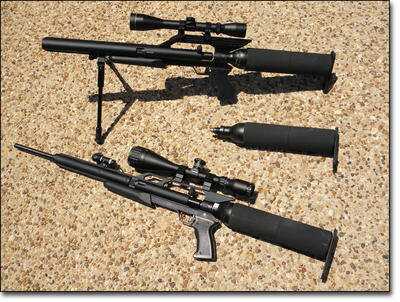
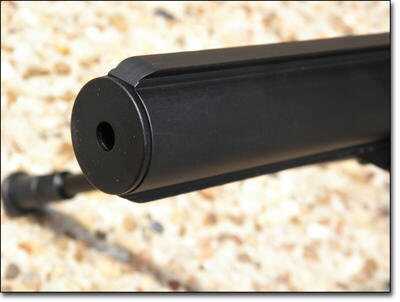
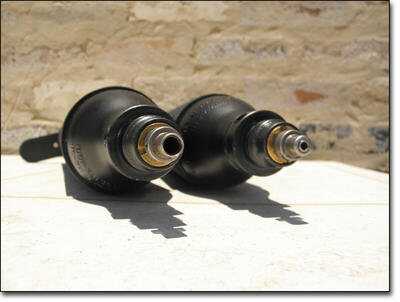
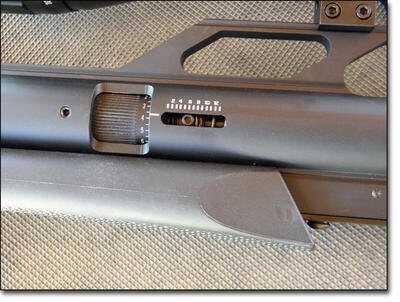
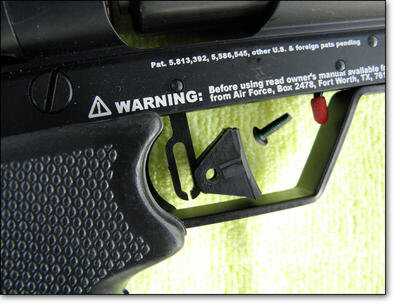
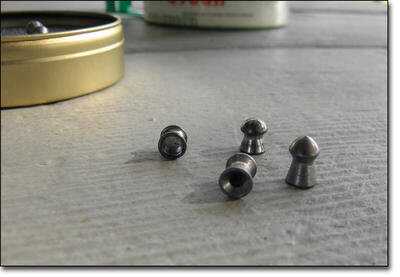
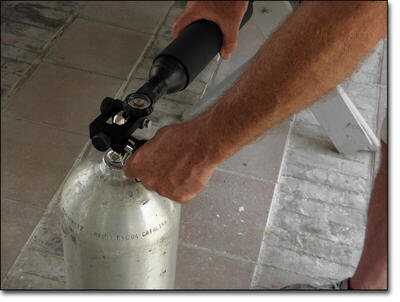
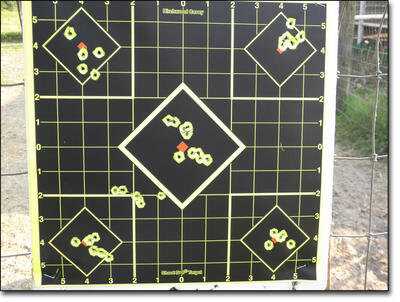
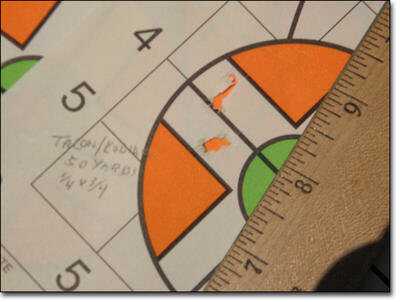
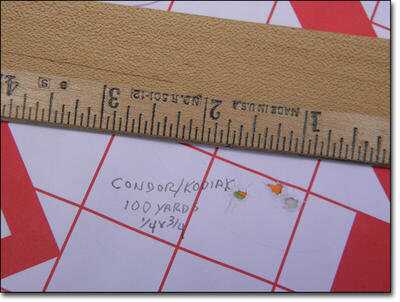
Great review of AirForce pellet guns! The precision and power of these airguns are impressive, much like how Zamprint ensures top-notch quality in all their print services.
i like hunting which rifle you prefer for this.
It’s very effortless to find out any topic on net as compared to textbooks, as I found
this post at this web page.
If Lewis and Clark could have an air rifle that shot a .46 caliber projectile through a 1 inch board at 100 yards with only 800 psi, way back in the year 1790…Why can’t someone duplicate that today??? With all the technological advances we have had since their time, it should be a simple task to create a modern air rifle with similar power,
I just don’t understand, so I wish someone would explain this to me… If Lewis and Clark could have an air rifle that shot a .46 caliber projectile through a 1 inch board at 100 yards with only 800 psi, way back in the year 1790…Why can’t someone duplicate that today??? With all the technological advances we have had since their time, it should be a simple task to create a modern air rifle with similar power, without having to use upwards of 3,000 psi to do it! And, it shouldn’t need to sell for close to $1,000.00, either. Why, why, why?
I would like to thank the “Administrator” for this review on “Air Force Air Rifles” I have watched all the Videos from The air gun reporter on pyramid air “Paul Capello” this Dude is the ” Larry Vickers ” of TacTv expert on anything air gun. This Air Force is priced right. I have a ton of Crows all over the place and are legal to shoot even here in San Diego.Yes, this liberal state Blows in a big way and I am planning to pull up stakes from here . I really hate to leave, 12 Min’s to any beach, the weather fantastic. Texas here I come….
I have a SS and a wicked set up. 8x32x44ao with 1/8th turretts, and a Harris by pod. This gun shoots Kodiaks at 35 yards and key holes the groups. Goes thru a squirel and two picked fences before it stops. Nastiest pellet gun I’ve ever seen.
Disappointed !
When we were kids, we used to shoot bottle caps off a fence at 35feet. With a Daisy or with my lever action crossman co2 BB gun. Which was fast for it’s day. With that Air Force you should be able to do that 75to 100yrds.
From what I read that would be iffy.
this is so amazing
You left out another type of airgun–single- and multi-pump pneumatics. Single, such as the Daisy Grizzly. Multis, such as the Crosman 760, 1377 or 2100, the Benjamin 397 or the Daisy Model 35 or 880. Like PCPs, no recoil, but they do need to be pumped in between shots. Fair tradeoff, IMO, since this allows you to control the power of each shot.
The hand pump will usually run you between $170 and $290. The better models have moisture traps, and the best model fills on both the upstroke and the downstroke. It will take around 250-300 strokes to fill a Condor or Talon bottle from empty.
These bottles hold 3000 PSI. Most people who rely on the pump will fill to 2800 PSI, then shoot about 10 shots.
Then they can top off the bottle with little pumping effort. The reason for the 2800 PSI fill is that is oftentimes the sweetspot where velocity stays the most consistent through a shot string. SCUBA tanks are usually only 3000 PSI. You get very few complete fills and then you cannot fill to the tops end after that. I know of at least one aluminum SCUBA tank that fills to 4350 PSI. Under $400, this is a great way to go. Carbon fiber wrapped bottles fill to 4500 PSI, and while they are light weight, they are more expensive. Personally, I have an 88 cubic inch carbon fiber wrapped bottle, and adpapters to let me fill mosy any PCP. For one of my guns, I have two extra tanks so I can hunt without worrying about running out of air.
Heat is your enemy. Left in the sun, the burst disc on the bottles can rupture. This can scare the pants off of you!
make sure your burst disc are installed correctly. They should be put on with the correct sealant, and to the correct amount of torque. Failure to do this correcty can be dangerous.
PCP is the best way to go. Enjoy it.
I own a Condor and a Stubby Extreme (modded Talon). My .25 Condor does 100 fpe with 62 grain slugs and the Stubby does about 55 fpe with a heavy pellet. Both are very accurate.
http://www.rlairgunsupply.com/cart/catalog/Custom_Shop-131-1.html
Most dive shops won’t fill a dive tank without a NAUI or PADI dive cert. Could pose a problem
We haven’t had a problem.
I own a condor with a modified hammer, valve, spring, and custom 27 inch barrel in .257. It fires a 88 gr cast spitzer slug at over 900 fps, making it generate more energy than a .22 cal pistol. The technology is astounding. I’m very happy with it. All scuba shops in MA fill for me no problem.
Actually the MSRP is mentioned in the very first paragraph.
“…the Talon SS, (MSRP $551) and the Condor, (MSRP $649), out at the ranch …”
Tell about the products. I can get the price. It is actually irrelevant in terms of tech. The want part? I have to take care of on my own, anyway.
They must be free, since no price is mentioned…..lol
Something new?
Girandoni air rifle as used by Lewis and Clark. A National Firearms Museum Treasure Gun.
http://www.youtube.com/watch?v=-pqFyKh-rUI
Thanks for the link … fascinating! Only wish NRA would have included video of shooting the reproduction gun that the speaker mentioned.
You are all missing the experience. When I heard that Benj/Crossman is coming out with a .357 cal semi PCP later this year, I researched PCP’s and found Pyramyd Air. After reviewing the info I purchased the Sam Yang Recluse .357 PCP–What an absolute wonderful pellet gun. My wife has taken 4 groundhogs and I’ve taken 2. We have a 70 gr hollow point, a 77.8 gr and a 90 gr round point !!! Accurate and ft pounds of energy! We sold a .17 Mach 2 for exactly the same price that we paid for the PCP. We are hunting much safer in our neighborhood and enjoy the slow, high impact pellet–kinda like my .50 cal muzzle loader. That lil .17, as well as all .22’s, will fly forever–trust me, I shot a man once with one–( richochet off a cypress stump)
I have high power rifles, low power rifles, shotguns, and reproductions for SASS ( Cowboy Shooting)–nothing is like slow heavy lead–black power and PCP .357–have fun!
Feel better? Conversely …
I found the article highly interesting and useful. Who knew there were high-tech “air guns” with those shooting qualities?
BB/pellet guns introduced many of us to marksmanship and gun safety. — Cub Scout BB gun classes in a basement.
First “hunting” in the warehouses of a childhood friend who’s dad was “MIller Seed Company.” Joe Miller and I took turns with a Benjamin .22 air rifle — more cocks = more power! Seed-robbing sparrows and mice fell to the Deadly Duo. In hindsight, we were fortunate to retain both eyes, what with lead pellets caroming off steel warehouse walls. That foundation served me well through a lifetime of hunting and shooting. In the military, easily qualified expert in both rifle and pistol, as did many Nebraska boys … weaned on the lowly air gun.
Exactly on point. Why tell us about a new, exciting weapon without mentioning the botom line: the msrp?
The MSRP prices have now been added. But there is this amazing new piece of technology called google. It is pretty easy to get street price and internet retailer price in about one click, and isn’t that more relevant?
How can you write this and leave out the PRICE???????
First paragraph you dork……
I am curious, nothing was mentioned about the hand pump and what is required to produce stated ability with use of hand pump only. Here, in the desert, there is a distinct shortage of air tanks and if there were, it would be impractical to keep it with you as you squirrel hunt in the mountains. Please tell more about type and process of filling the air force condor with a high pressure hand pump.
Respectfully,
Wayne Snyder
Enjoyed the article but I do wish you had included a Mfg. base price for each of the rifles and the scopes.